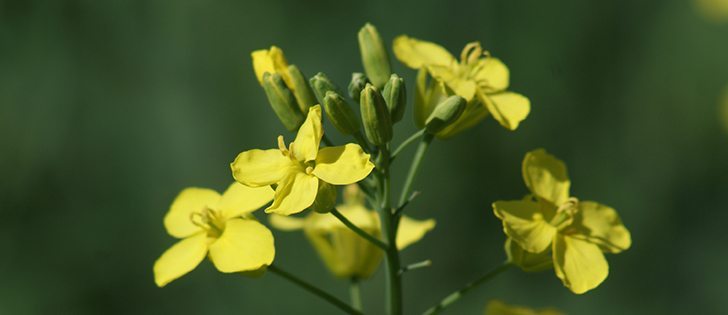EDMONTON — Farmers may one day be able to receive text messages telling them how many sclerotinia spores are in their fields.
Researchers from the University of Alberta hope the technology will make it easier for producers to time their fungicide applications.
The in-field biosensor that they are developing is intended to provide real time sclerotinia spore detection.
The first step in developing the spore detector was to create a biosensor, which researcher Susie Li said needs a high level of specificity so that it can differentiate sclerotinia spores from other spores in the air.
The researchers accomplished this by producing an antibody that is able to detect sclerotinia spores in the air and then integrating the antibody with nanotechnology.
A nanoparticle that is attached to the antibody sends a signal once it attaches to a sclerotinia spore.
“You bond your gold nano to the bottom of the chip, then you connect your antibody to the nanoparticle,” Li said April 6 during a presentation at Murray Hartman’s Science O-Rama in Edmonton.
“And because the antibody is very specific, whenever the spore comes, they are connected to that antibody only. Everything else will be washed away.”
The biosensor must be sensitive so that farmers will have time to spray their fields before the disease spreads too widely.
Read Also

House ag committee to undertake several studies
The House of Commons standing agriculture committee has set its agenda for the coming months. Members began the fall sitting with a two-hour update on international trade
“We can detect as low as five spores with this technology,” Li said.
“Now we have to test the correlation between the numbers of spores and the impedance signal. We found that a decrease of spore numbers, you have a decrease of impedance signal, and the correlation is very strong.”
The researchers also needed to find a spore collector to integrate with their biosensor.
“We selected VersaTrap from SKC because this spore trap collects spores in the liquid form, and our biosensor needs liquid medium to detect the spores,” she said.
She said mechanical engineers are now working on the spore detector, including how to integrate the biosensor, the spore collector and it’s reporting technology, but Li said she has confidence in the proof of concept experiments they’ve conducted.
The spore detector is being developed to be as user friendly as possible, she added.
“We designed the user interface as a web application so that cross-platform devices can access it.”
Li expects the final spore detector to be on the market in approximately three years.
The technology will be economical, she added.
“I think the cost will be very reasonable because the biosensor itself is actually not that expensive, and spore collectors are cheap too,” she said.
“You put these two together in the field and you can use them for many years.”


















